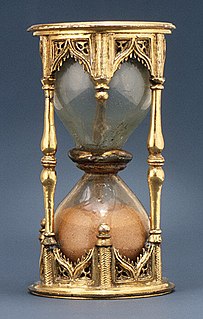Thorn in the flesh is a phrase of New Testament origin used to describe an annoyance, or trouble in one's life, drawn from Paul the Apostle's use of the phrase in his Second Epistle to the Corinthians 12:7–9:
And lest I should be exalted above measure through the abundance of the revelations, there was given to me a thorn in the flesh, the messenger of Satan to buffet me, lest I should be exalted above measure. 8 For this thing I besought the Lord thrice, that it might depart from me. 9 And he said unto me, My grace is sufficient for thee: for my strength is made perfect in weakness. Most gladly therefore will I rather glory in my infirmities, that the power of Christ may rest upon me. (KJV)

A vanitas is a symbolic work of art showing the transience of life, the futility of pleasure, and the certainty of death, often contrasting symbols of wealth and symbols of ephemerality and death. Best-known are vanitas still lifes, a common genre in Low countries of the 16th and 17th centuries; they have also been created at other times and in other media and genres.

Oil sands, tar sands, crude bitumen, or more technically bituminous sands, are a type of unconventional petroleum deposit. Oil sands are either loose sands or partially consolidated sandstone containing a naturally occurring mixture of sand, clay, and water, soaked with a dense and extremely viscous form of petroleum technically referred to as bitumen.

The Rub' al Khali is the sand desert (erg) encompassing most of the southern third of the Arabian Peninsula. The desert covers some 650,000 km2 (250,000 sq mi) including parts of Saudi Arabia, Oman, the United Arab Emirates, and Yemen. It is part of the larger Arabian Desert.

A bucket is typically a watertight, vertical cylinder or truncated cone or square, with an open top and a flat bottom, attached to a semicircular carrying handle called the bail.

Carpe diem is a Latin aphorism, usually translated "seize the day", taken from book 1 of the Roman poet Horace's work Odes.

Thermoluminescence is a form of luminescence that is exhibited by certain crystalline materials, such as some minerals, when previously absorbed energy from electromagnetic radiation or other ionizing radiation is re-emitted as light upon heating of the material. The phenomenon is distinct from that of black-body radiation.

Prince of Persia: The Sands of Time is an action-adventure video game developed and published by Ubisoft. Revealed in March 2003, it was released across Game Boy Advance, PlayStation 2, GameCube, Xbox and Microsoft Windows in November 2003. The Sands of Time is a reboot of the Prince of Persia series, created by Jordan Mechner. Mechner served as creative consultant, designer, and scenario writer for The Sands of Time.

Prince of Persia: The Two Thrones is an action-adventure video game developed and published by Ubisoft Montreal. It was released for PlayStation 2, GameCube Microsoft Windows and Xbox. It was censored and ported to the PlayStation Portable and Wii, under the title Prince of Persia: Rival Swords with the Wii version utilizing the motion-sensing functionality of its controller, while the PSP version added exclusive content and local multiplayer
Sands of time may refer to:

An hourglass is a device used to measure the passage of time. It comprises two glass bulbs connected vertically by a narrow neck that allows a regulated flow of a substance from the upper bulb to the lower one. Typically the upper and lower bulbs are symmetric so that the hourglass will measure the same duration regardless of orientation. The specific duration of time a given hourglass measures is determined by factors including the quantity and coarseness of the particulate matter, the bulb size, and the neck width.

The Legend of Zelda: Phantom Hourglass is an action-adventure game developed and published by Nintendo for the Nintendo DS handheld game console. It is the fourteenth installment in The Legend of Zelda series and the direct sequel to the 2002 GameCube title The Wind Waker. Phantom Hourglass was released in Japan in June 2007; in North America, Australia, and Europe in October 2007; and in Korea in April 2008. The game was re-released for the Wii U via the Virtual Console service in the PAL region in November 2015, in North America in May 2016, and in Japan in August 2016. It earned a sequel, The Legend of Zelda: Spirit Tracks in 2009.

Deliblato Sands is a large sand area covering around 300 km2 (120 sq mi) of ground in Vojvodina province, Serbia. It is located in southern Banat, situated between the river Danube and the southwestern slopes of the Carpathian Mountains. The sands are named after the village of Deliblato, in the municipality of Kovin. Its main masses are elliptical shaped hills with steppe grassland plains and steppe forests.

Douglas Williams and Julie Olson Williams are fictional characters and a supercouple from the American daytime drama Days of Our Lives. Doug and Julie are considered to be the first supercouple in daytime television history. Doug is portrayed by Bill Hayes and Julie is portrayed by Susan Seaforth Hayes. The actors are married in real life and also still recur in their roles that made them famous on NBC's Days of our Lives.
"The devil is in the details" is an idiom that refers to a catch or mysterious element hidden in the details, meaning that something might seem simple at a first look but will take more time and effort to complete than expected and derives from the earlier phrase, "God is in the details" expressing the idea that whatever one does should be done thoroughly; i.e. details are important.

Oil-lamp clocks are clocks consisting of a graduated glass reservoir to hold oil - usually whale oil, which burned cleanly and evenly - supplying the fuel for a built-in lamp. As the level in the reservoir dropped, it provided a rough measure of the passage of time.

Sand is a granular material composed of finely divided rock and mineral particles. It is defined by size, being finer than gravel and coarser than silt. Sand can also refer to a textural class of soil or soil type; i.e., a soil containing more than 85 percent sand-sized particles by mass.

Prince of Persia: The Forgotten Sands is a multi-platform video game produced by Ubisoft, which was released on May 18, 2010, in North America and on May 20 in Europe. The games mark a return to the storyline started by Prince of Persia: The Sands of Time. Prince of Persia: The Forgotten Sands is the title of four separate games with different storylines. It was released for PlayStation 3, PlayStation Portable, Wii, Xbox 360, Nintendo DS, and Microsoft Windows. Following its release, the series went into a decade-long hiatus, with no titles developed for home consoles; this ended when a remake of Prince of Persia: The Sands of Time was announced in 2020 for the next generation, scheduled for a 2021 release.

A marine sandglass is a timepiece of simple design that is a relative of the common hourglass, a marine (nautical) instrument known since the 14th century. They were employed to measure the time at sea or on a given navigational course, in repeated measures of small time increments. Used together with the chip log, smaller marine sandglasses were also used to measure the boat speed through the water in knots.

Ethel Sands was an American-born artist and hostess who lived in England from childhood. She studied art in Paris, where she met her life partner Anna Hope Hudson (Nan). Her works were generally still lifes and interiors, often of Château d'Auppegard that she shared with Hudson. Sands was a Fitzroy Street Group and London Group member. Her works are in London’s National Portrait Gallery and other public collections. In 1916 she was made a citizen of England. Although a major art patron, she is most remembered as a hostess for the cultural elite, including Henry James, Virginia Woolf, Roger Fry and Augustus John.

















